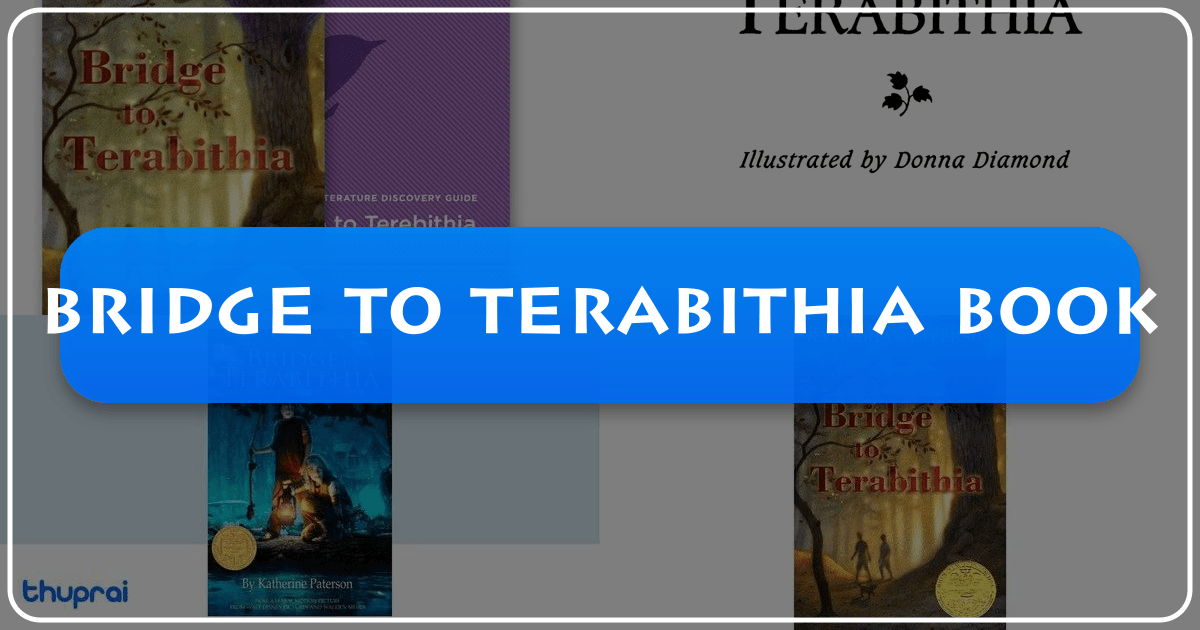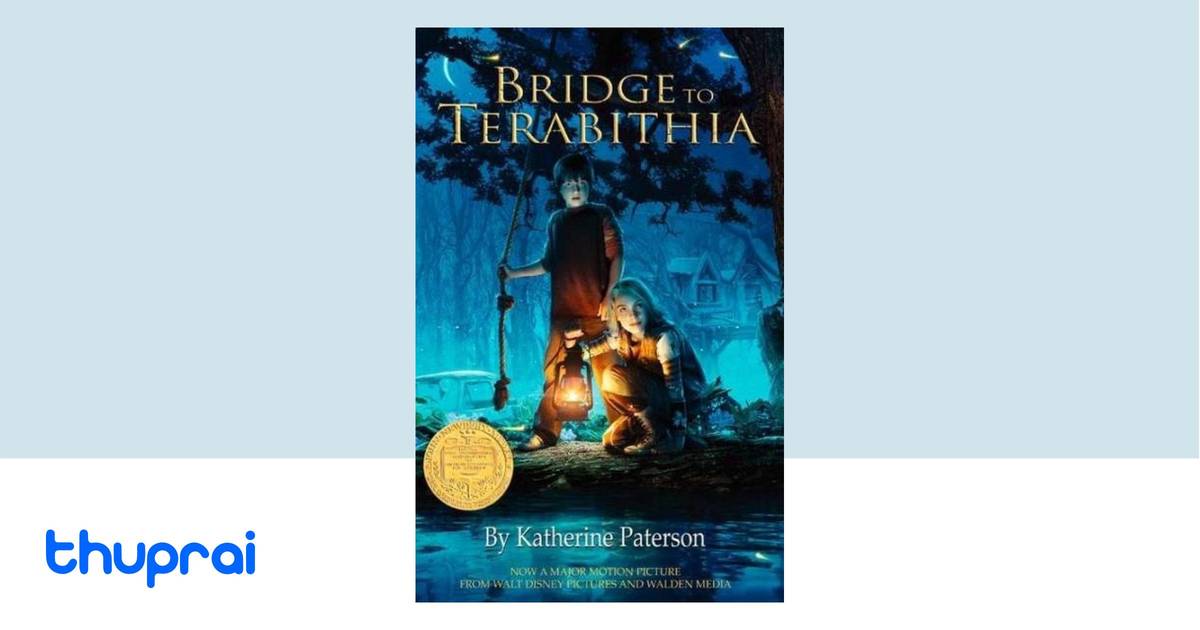Bridge to Terabithia: A Deep Dive into Katherine Paterson's Classic Novel

Katherine Paterson’s Bridge to Terabithia is more than just a children’s book; it’s a poignant exploration of childhood friendship, loss, grief, and the power of imagination. This in-depth analysis delves into the novel’s enduring appeal, examining its literary merit, cultural impact, and the lasting lessons it imparts to readers of all ages. We’ll explore the book through the lens of several key topics: genres and classifications, authorial influences, educational value and life lessons, and its broader cultural resonance.
Genre and Literary Classification
Bridge to Terabithia defies easy categorization, transcending simple genre boundaries. While primarily classified as children’s literature, its thematic complexity and emotional depth resonate with adult readers as well. Several genres intersect within the narrative:
Children’s Literature:

At its core, the novel is a work of children’s literature, targeting a young audience through its accessible language, relatable characters, and straightforward plot structure. However, the book’s exploration of mature themes such as death, grief, and social dynamics elevates it beyond typical children’s fare.
Fantasy Literature:
The creation of Terabithia, a magical kingdom in the woods, introduces elements of fantasy into the story. This fictional world serves as an escape for Jess and Leslie, providing a space for them to express their creativity and confront their fears. The fantasy elements are interwoven seamlessly with the realistic aspects of the narrative, enhancing its emotional impact. The line between reality and fantasy is deliberately blurred, mirroring the fluidity of a child’s imagination.

Coming-of-Age Story:
Bridge to Terabithia is also a powerful coming-of-age story. Jess’s journey throughout the novel marks a significant transition in his understanding of the world, himself, and the complexities of human relationships. He confronts the challenges of growing up, facing loss, and ultimately learning to navigate the adult world. The novel tracks his emotional development with sensitivity and honesty.
Realistic Fiction:
Despite the fantasy elements, the novel is grounded in realistic settings and situations. The portrayal of Jess’s family, his relationship with his siblings, and the social dynamics of his school are all realistically depicted. This balance between fantasy and realism allows the reader to connect with the characters and their experiences on a deeper level.

Katherine Paterson: Authorial Influences and Writing Style
Katherine Paterson, a renowned author with numerous awards to her name, including two Newbery Medals, brings a unique perspective and style to Bridge to Terabithia. Her background and experiences heavily influence her writing.
Biographical Influences:
Paterson’s own childhood experiences, including her time living abroad and her observations of human nature, are reflected in the novel. The depiction of Jess’s family dynamics and his struggles with his siblings likely draw upon her own understanding of family life. Her experiences as a teacher also shape her approach to portraying the emotional complexities of children.
Literary Influences:
Paterson’s writing style showcases her skill in blending various literary devices to create a captivating narrative. She masterfully uses imagery and descriptive language to evoke the atmosphere of the setting. The dialogue is realistic and authentic, capturing the essence of childhood conversations. Her ability to blend fantasy and realism seamlessly is a testament to her creative prowess. She also uses symbolism effectively, notably through the creation of Terabithia itself, which acts as a symbol for childhood imagination, friendship, and the need for escape. The loss of Terabithia parallels the loss of innocence and the entrance into the complex realities of adulthood.
Writing Style:
Paterson’s prose is characterized by its simplicity, clarity, and emotional resonance. She avoids overly sentimental or melodramatic language, opting for a direct and honest approach that allows the reader to connect with the characters’ emotional journeys authentically. The narrative voice is largely from Jess’s perspective, providing an intimate and relatable portrayal of his thoughts and feelings. This first-person perspective allows readers to understand Jess’s emotional turmoil and his eventual growth. The novel’s pacing is well-managed, balancing moments of joy and wonder with the inevitable sadness and loss that follows.
Educational Value and Life Lessons
Bridge to Terabithia offers significant educational value, going beyond mere entertainment. It provides opportunities for readers to explore critical themes and learn valuable life lessons:
Coping with Grief and Loss:
The central event of the novel, Leslie’s death, is a powerful exploration of grief and loss. Jess’s experience serves as a profound illustration of the different stages of grief, from initial shock and denial to acceptance and eventual healing. The novel offers a sensitive and honest portrayal of this complex process, validating the reader’s own feelings and providing a framework for coping with loss. This exploration of grief is particularly important for young readers who may lack the emotional vocabulary or experience to process such significant loss.
Importance of Friendship:
The strong friendship between Jess and Leslie is the emotional core of the narrative. Their relationship demonstrates the importance of unconditional support, understanding, and shared creativity. The depth of their bond highlights the value of authentic companionship, particularly during the challenging years of childhood. The strength of this friendship enhances the poignancy of Leslie’s death, emphasizing the significance of the relationship for Jess.
Power of Imagination:
The creation of Terabithia showcases the transformative power of imagination. It serves as a refuge for Jess and Leslie, offering a space for them to escape the pressures of reality and explore their creative potential. This emphasis on imagination highlights the vital role it plays in childhood development and emotional well-being. Terabithia is not simply a place of fantasy; it represents a realm of boundless creativity and emotional support.
Facing Challenges and Adversity:
Jess confronts various challenges throughout the novel, including bullying, family conflicts, and the profound loss of his friend. His journey demonstrates the resilience of the human spirit and the ability to overcome adversity. The novel subtly emphasizes the importance of self-reliance and the need to find personal strength, even in the face of profound loss.
Cultural Impact and Reception
Bridge to Terabithia has made a significant cultural impact, influencing other works of literature, inspiring adaptations, and sparking conversations about important social and emotional issues:
Literary Influence:
The book’s enduring popularity and critical acclaim have cemented its place as a touchstone of children’s literature. It has influenced countless other works, inspiring authors to explore similar themes and narrative structures. Its blend of realism and fantasy has become a model for subsequent children’s novels.
Adaptations:
The novel’s popularity has led to various adaptations, including a successful film adaptation. These adaptations have further broadened the novel’s reach and introduced its themes to a wider audience. While adaptations often deviate from the original source material, they allow for new interpretations and perspectives on the story.
Awards and Recognition:
Bridge to Terabithia has received numerous awards and accolades, including the coveted Newbery Medal, further confirming its literary merit. These awards validate the novel’s artistic achievement and its lasting significance. The Newbery Medal, in particular, highlights the book’s contribution to children’s literature.
Communities and Discussions:
The book has fostered vibrant communities of readers who engage in discussions about its themes, characters, and significance. The emotional depth and the mature exploration of complex subjects create opportunities for critical engagement and analysis. This ongoing discussion about the novel’s impact cements its place in modern culture.
Conclusion
Katherine Paterson’s Bridge to Terabithia remains a timeless classic due to its potent combination of imaginative storytelling, realistic portrayal of childhood struggles, and thoughtful exploration of significant life events. Its lasting impact on children’s literature, its numerous adaptations, and the ongoing discussions it sparks demonstrate its profound cultural significance and its ability to resonate with readers across generations. The book’s exploration of grief, friendship, imagination, and resilience offers valuable lessons that continue to inspire and comfort readers of all ages.